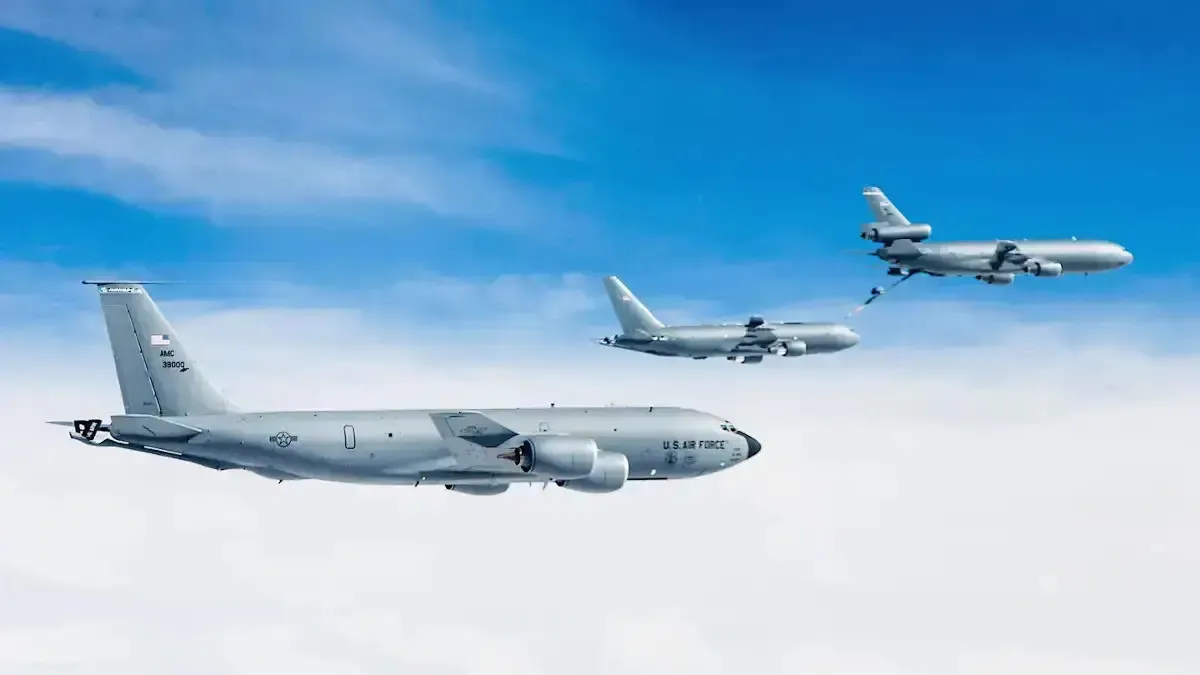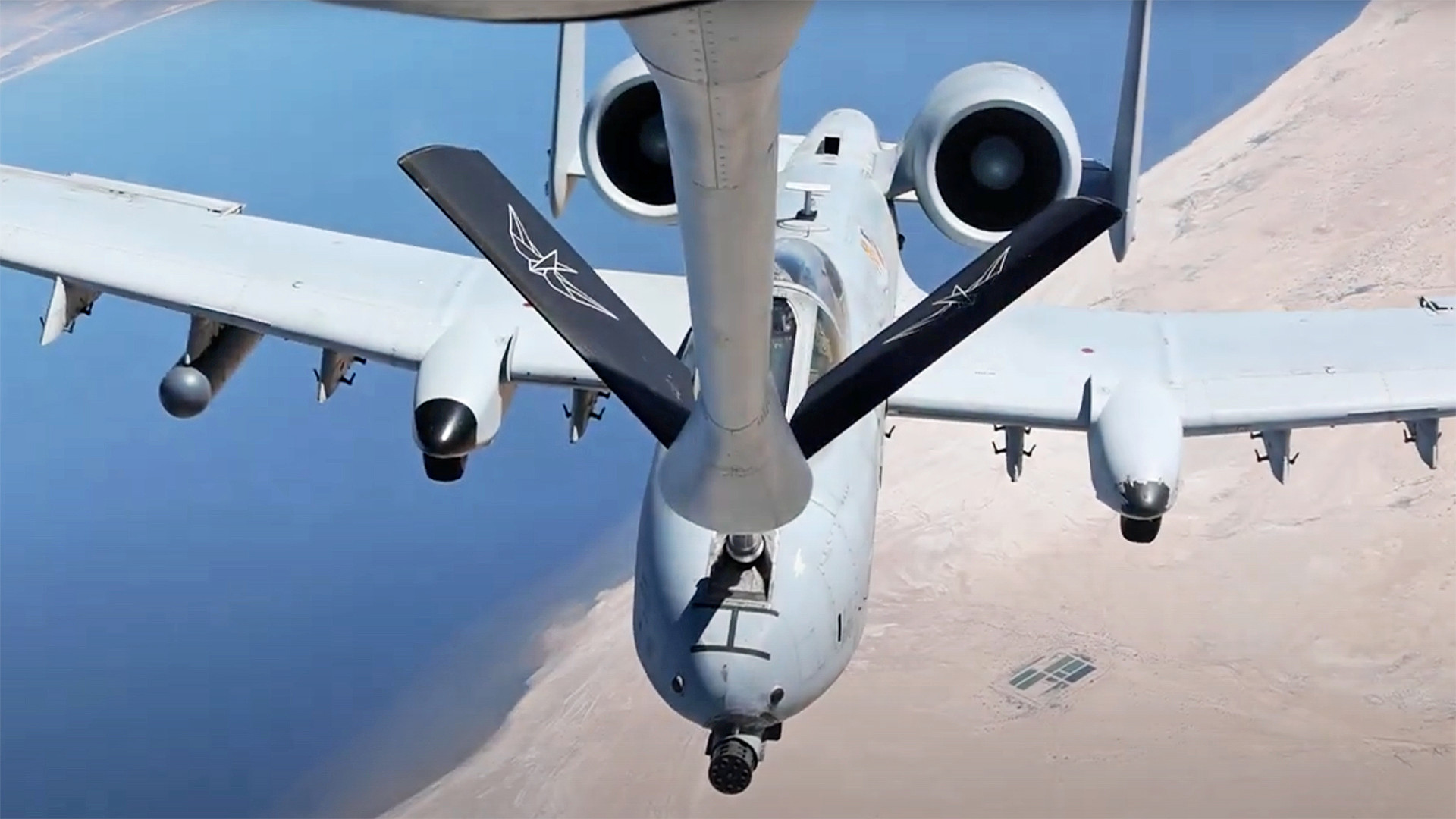A-10 Warthog ground attack aircraft are among the growing number of U.S. military aircraft types that have now refueled from privately owned tankers. A KC-135 from private aerospace firm Metrea refueling Warthogs during an exercise last year also marked the first time a contractor-operated tanker had ever linked up with U.S. Air Force tactical jets.
The Air Force, specifically, has been increasingly making use of private aerial refueling services in the past year, which will help it reduce the burdens on its own tanker fleets.

The Metrea KC-135 refueled a pair of A-10s during an exercise in October 2023, the company told The War Zone in a statement. This came ahead of a privately-owned KDC-10 tanker belonging to Omega Air Refueling linking up with F-16 Viper fighters as part of a different exercise in November 2023, which the Air Force officially announced later that month. The service said the latter event was the first time any of its fighters had received fuel from a contractor-operated tanker. The Air Force sometimes refers to A-10s as “fighters” (they are currently assigned to “fighter” squadrons), but the Warthog is an attack aircraft.

“On October 6, 2023, in support of a Weapons and Tactics Instructor Course, Metrea Strategic Mobility successfully refueled two A-10 receivers,” according to Metrea. “A crew flying one of Metrea Strategic Mobility’s KC-135R tankers delivered a total of 12,100 pounds of fuel, helping extend the participation of the A-10 receivers in exercise.”

The Weapons and Tactics Instructor Course, or WTI, is a seven-week-long program for U.S. Marine Corps aviators at Marine Corps Air Station (MCAS) Yuma in Arizona. Some have described WTI as the “TOPGUN of the Marines” and every class finishes their time at Yuma with a major capstone exercise that often includes personnel and assets from other services. WTI exercises give participating Marines the opportunity to demonstrate the combat aviation tactics, techniques, and procedures they have mastered. Individuals who complete the courses go back to their home units to further disseminate what they have learned. You can read more about the WTI course in this past War Zone feature.
Metrea’s KC-135 topping up the A-10s was the company’s third aerial refueling milestone last year. In April, it became the first private firm to transfer fuel to any type of aircraft in mid-air using a boom-equipped tanker when one of its KC-135s linked up with a U.S. Navy P-8A Poseidon maritime patrol plane during training. Two months later, a Metrea KC-135 became the first contractor-operated tanker to refuel any type of U.S. Air Force aircraft when it transferred fuel to an RC-135V/W Rivet Joint surveillance plane and an E-3 Sentry Airborne Warning and Control System (AWACS) aircraft as part of an exercise.


Metrea’s fleet of boom-equipped KC-135s is a significant factor in all of this. Metrea is currently one of only two private contractors to fly tankers with booms, the other being Omega Air Refueling. This is the Air Force’s preferred aerial refueling method.
The four KC-135s Metrea flies came second-hand from the Republic of Singapore Air Force back in 2020. They now wear at least two different multi-tone camouflage schemes that are reminiscent of one the Air Force used on tankers in the 1980s and 1990s that was nicknamed the “shamu” due to its visual similarities to the shading on orca whales.
The Navy and Marine Corps, as well as many U.S. allies and partners abroad, primarily use the probe-and-drogue refueling method instead (the Navy’s P-8A fleet is a notable exception). Omega has been refueling Navy and Marine Corps tactical jets, as well as a host of other types, including advanced drones during one set of tests, via probe-and-drogue during training and other non-combat activities for years now. Metrea’s KC-135s also have probe-and-drogue refueling capability via underwing pods.
“To date, Metrea Strategic Mobility [MSM] has flown over 2,000 hours, refueled 2,800 aircraft and offloaded more than 16 million pounds of fuel while maintaining a 92% mission success rate,” Metrea’s statement to The War Zone said. “The combined Metrea aviation units have flown over 130,000 accident-free flying hours, across multiple aircraft types, missions, and geographies in support of US, UK, and other allied and partner government national security objectives. MSM’s aircraft are equipped with two wing-mounted Multi-Point Refueling System (MPRS) pods which facilitate refueling with probe equipped Navy, Marine Corps and partner nation aircraft.”
The video below shows a U.S. Air Force KC-135R refueling Royal Australian Air Force F/A-18 Hornet fighters using wing-mounted Multi-Point Refueling System pods.

The expanding number of Air Force aircraft types, including tactical jets, now making use of private aerial refueling service has broader significance. For years, the service has been exploring options for reducing the strain on its already greatly in-demand tanker fleets. Those aerial refuelers would only be more heavily tasked during any future major conflict, such as one against China in the Pacific.
Using privately owned tankers to support training and other non-combat activities, such as test and evaluation events and the peacetime movement of aircraft from one location to another, provides valuable additional capacity. This, in turn, frees up Air Force tankers for combat or other higher-priority missions, or just helps them be more readily available for those taskings should they arise. Reducing the amount of flying the service’s tankers do on a day-to-day basis is a boon for preserving airframe life, too.
The Air Force is also in the midst of a major transformation of its tanker fleets. The service’s current inventory includes KC-135, KC-10A Extender, and KC-46A Pegasus types. However, the last of the KC-10s are expected to be retired by the end of this year, and the type has officially flown its last combat mission already.

The Air Force has already divested a number of KC-135s in recent years. The service plans to eventually supplant that type completely with a combination of new-production, but traditionally-configured tankers and examples of clean-sheet advanced and possibly stealthy design. There are growing signs that the Air Force wants to simply acquire more KC-46As to meet its requirements for additional traditional tankers rather than hold an open competition as had been planned in the past. The more advanced design is being developed under the Next Generation Air-refueling System (NGAS) program and the Air Force hopes to have the first of those aircraft in service by 2040, if not sooner.
The KC-46A has suffered a litany of technical and other issues over the years. Major deficiencies with the design remain, especially the hybrid 2D/3D Remote Vision System (RVS) its boom operators in the main cabin use to connect with receiving aircraft, and have limited its true operational utility. On the KC-135 and KC-10, the boom operator is in a physical position at the rear of the aircraft and manually directs the boom. Problems with the Pegasus’ boom itself have prevented these tankers from refueling A-10s at all. You can read more about these issues in detail here.

All of this puts additional pressure on the Air Force’s current tanker fleets and further underscores the value of using contractor-operated types to help meet non-combat demands.
Altogether, it seems likely we will only continue to hear about Metrea’s KC-135s, as well as Omega’s boom-equipped KDC-10, refueling more and more types of Air Force aircraft, and doing so on a more regular basis, in the future.
Contact the author: joe@thedrive.com
